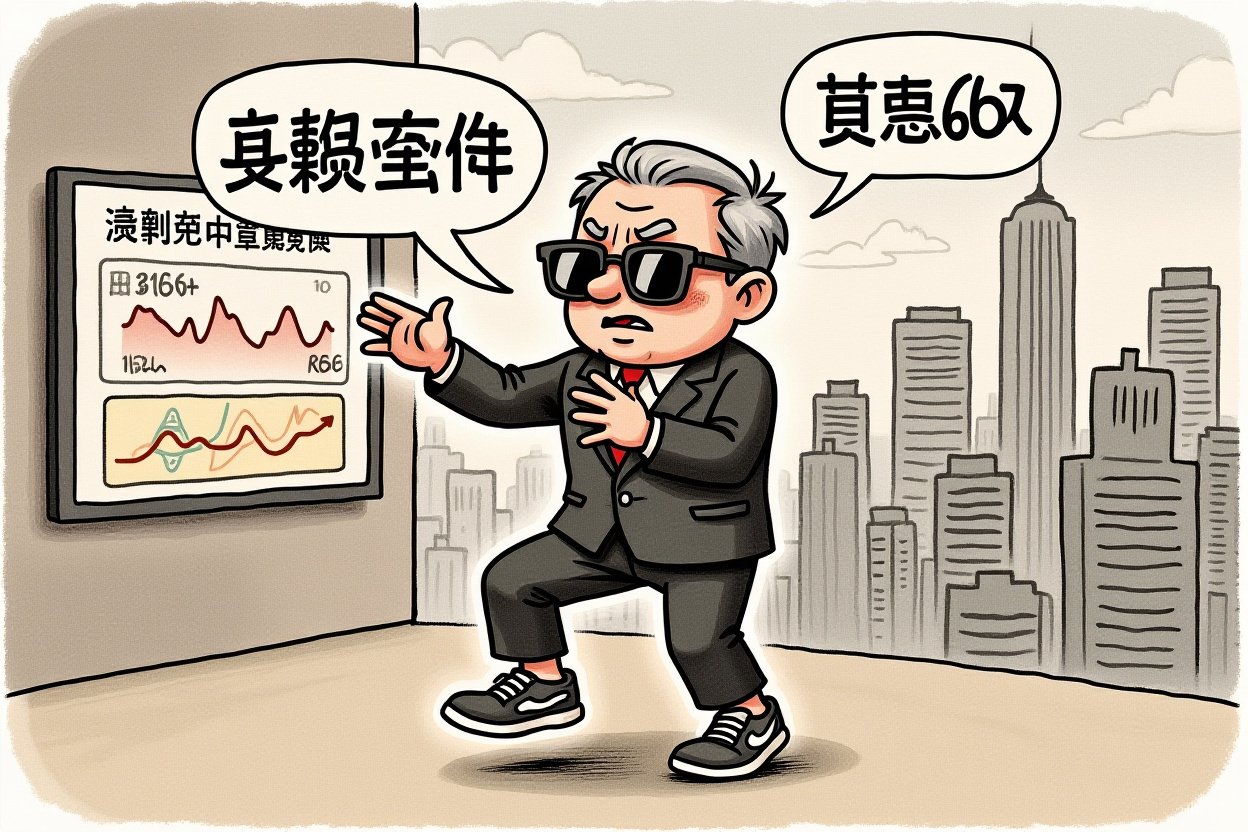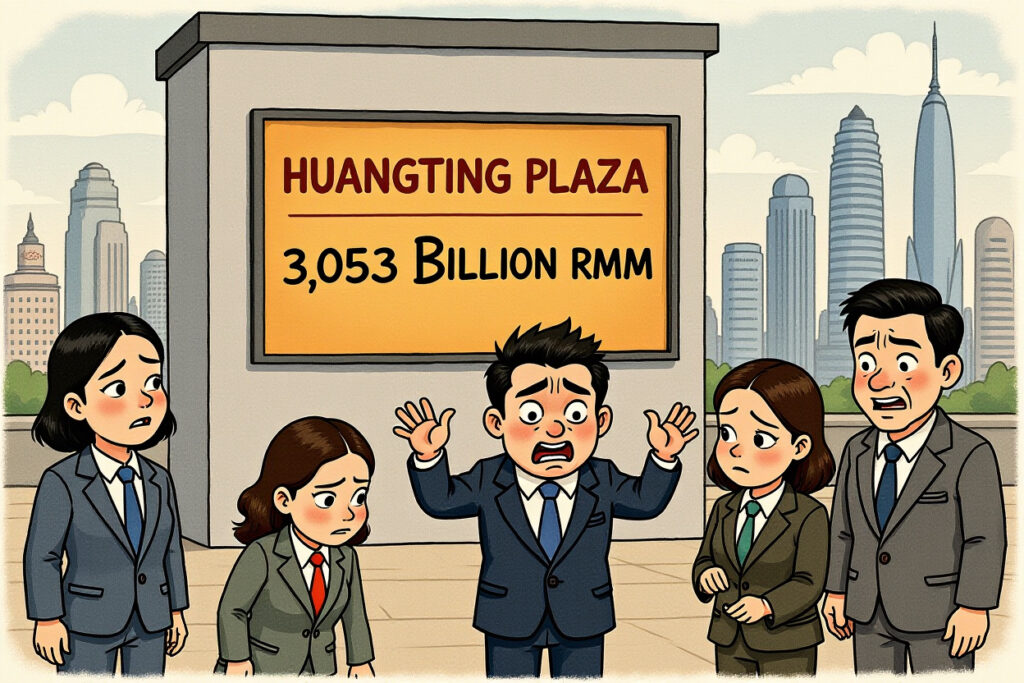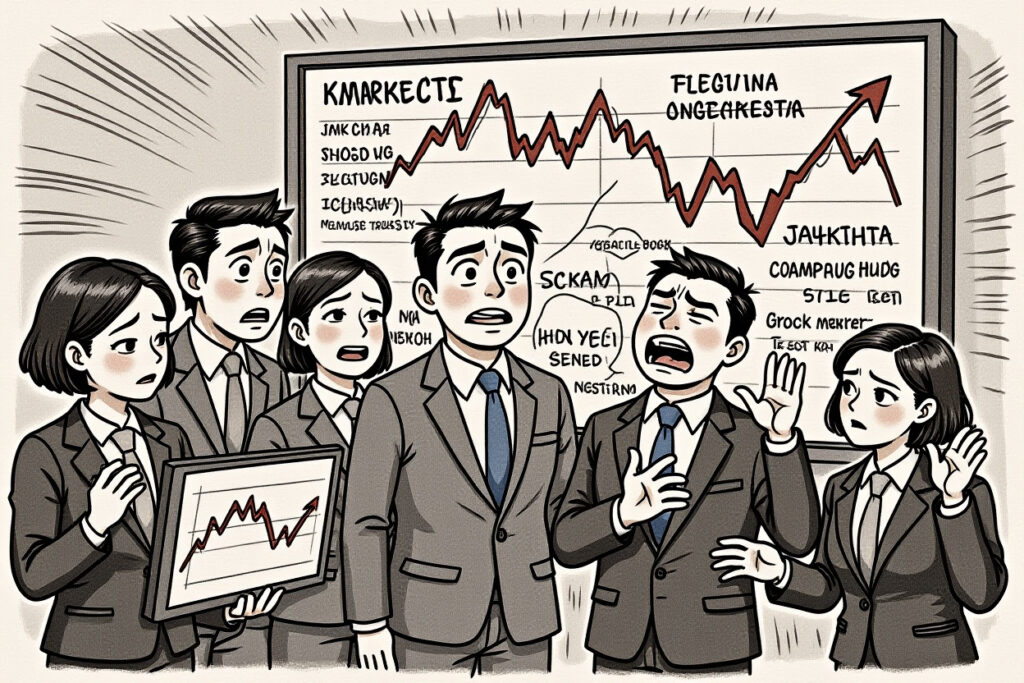At 60 years old, Zhou Chengjian (周成建), the founder who once dominated China’s fashion retail scene, now dances in sunglasses and sneakers on Douyin livestreams. His ‘Tailor Zhou Chengjian’ channel recently attracted 20,000 viewers watching the former Zhejiang billionaire perform group dances—a far cry from his days as one of China’s wealthiest entrepreneurs. This dramatic transformation represents Metersbonwe’s desperate attempt to survive in an increasingly competitive market where even billionaires must embrace the ‘老铁666’ culture of live-streaming commerce.
The Live-Streaming Pivot: Billionaire Goes Digital
Zhou Chengjian’s personal entry into live-streaming represents one of the most dramatic CEO transformations in Chinese retail history. The founder who once built a fashion empire worth billions now spends hours interacting directly with consumers in the digital marketplace.
From Boardroom to Livestream Studio
In 2024, Zhou officially announced Metersbonwe’s New Retail 5.0 transformation strategy, with his personal participation in live-streaming as a centerpiece. He joined Taobao’s ‘Courageous CEOs’ program, where executives directly engage in sales through live broadcasts. During his streams, Zhou frankly admitted that previous collaborations with celebrity livestreamer Jia Nailiang’s team ‘cost millions with mediocre results.’ This honest assessment surprised many viewers but demonstrated his commitment to finding authentic connections with consumers.Zhou’s 10-hour live-streaming debut in 2024 achieved over 15 million RMB in GMV (Gross Merchandise Value), with three individual products exceeding one million RMB in sales each. Despite these seemingly impressive numbers, the live-streaming pivot has failed to translate into sustained financial improvement for the struggling company.
The ‘老铁666’ Economy: When Billionaires Need Viewer Support
The term ‘老铁666’—roughly translating to ‘close friend, awesome’—epitomizes the informal, relationship-driven culture of Chinese live-streaming platforms. For Zhou Chengjian to embrace this culture represents a significant departure from his previous corporate image. Where he once managed thousands of stores and appeared in polished corporate advertisements, he now directly asks viewers for engagement and support through digital interactions.
Financial Freefall: Analyzing Metersbonwe’s Steep Decline
The numbers tell a troubling story of persistent decline despite Zhou’s very public efforts to revitalize his company.
Revenue Collapse and Profit Erosion
Metersbonwe’s financial performance has deteriorated dramatically in recent years. The company’s 2024 full-year revenue reached just 681 million RMB, representing a staggering 49.79% year-over-year decrease. More alarming, net profit attributable to shareholders showed a loss of 195 million RMB, plummeting 715.45% compared to the previous year.The first half of 2025 brought no relief, with revenue falling to 227 million RMB (down 45.23% year-over-year) and net profit to shareholders shrinking to 9.93 million RMB (an 87.07% decrease). Perhaps most tellingly, the company’s non-GAAP net profit—which excludes one-time items and better reflects core business performance—was just 666,400 RMB, down 91.79% from the previous year.
Cash Flow Crisis and Debt Problems
The company’s cash flow situation paints an even grimmer picture. From 2022 through 2024, operating cash flow remained persistently negative: -535 million RMB, -190 million RMB, and -302 million RMB respectively. The first half of 2025 continued this trend with -42 million RMB in operating cash flow, indicating severely impaired ability to generate cash from core operations.According to Shanghai Commercial Paper Exchange disclosures, Metersbonwe’s cumulative acceptance amount reached 7.24 million RMB in the first half of 2025, with an acceptance balance of 7.08 million RMB. Meanwhile, cumulative overdue payments reached 103 million RMB, resulting in the suspension of the company’s commercial acceptance privileges.
From ‘King of the Pedestrian Street’ to Survival Mode
To understand Metersbonwe’s current struggles, we must examine its remarkable rise and what made the brand so dominant in China’s retail landscape.
The Early Innovation: Virtual Manufacturing Model
Zhou Chengjian founded Metersbonwe in 1995 in Wenzhou, introducing a revolutionary ‘virtual operation’ model to China’s apparel industry. While competitors struggled with the capital-intensive ‘self-production + direct sales’ model, Zhou pioneered ‘production outsourcing + franchise sales.’ This innovative approach allowed Metersbonwe to avoid heavy investment in manufacturing facilities while rapidly expanding through franchise partnerships.The strategy proved brilliantly successful. Without the burden of production assets, the company could focus resources on brand building and product design. Within a few years, Metersbonwe stores expanded from Wenzhou to nationwide presence.
The Jay Chou Effect: Marketing Genius
The brand’s breakthrough moment came in 2003 when Zhou made the visionary decision to sign Jay Chou (周杰伦) as brand ambassador. At the time, Chou was reaching peak popularity across Asia with hits like ‘Nunchucks’ and ‘Seven Mile Fragrance,’ embodying the cool, individualistic spirit that resonated with Chinese youth.When Jay Chou appeared in Metersbonwe advertisements declaring ‘不走寻常路’ (‘Don’t take the ordinary road’), he perfectly captured the brand’s positioning and connected with young consumers seeking individuality. The marketing campaign became iconic, transforming Metersbonwe into what felt like ‘the exclusive clothing brand for Chinese youth.’
Peak Performance and Industry Dominance
The combination of innovative business model and superstar marketing propelled Metersbonwe to extraordinary success. In 2008, the company went public on the Shenzhen Stock Exchange, becoming China’s ‘first leisure wear stock’ and reaching a market capitalization of 38.9 billion RMB at its peak.Zhou Chengjian’s personal wealth soared accordingly. He topped China’s apparel industry rich list for three consecutive years and ranked fifth on the Forbes China Rich List in 2008 with $2 billion in assets, making him Zhejiang province’s wealthiest person at the time.By 2011, Metersbonwe reached its zenith: annual sales revenue of 9.945 billion RMB, net profit of 1.206 billion RMB, and more than 5,000 stores nationwide. The brand dominated prime retail locations in cities across China, earning the title ‘King of the Pedestrian Street.’
Internal Challenges and External Threats: Why Metersbonwe Fell Behind
The company’s decline resulted from a perfect storm of external market shifts and internal structural problems.
Foreign Fast Fashion Invasion
The first major challenge came from international fast fashion brands entering China. ZARA, H&M, and Uniqlo brought ‘quick response’ supply chains that could rapidly translate global fashion trends to market. While these competitors could design, produce, and stock new items within weeks, Metersbonwe’s product development cycle stretched 6-8 months—by which time trends had often changed.Young consumers increasingly gravitated toward fast fashion brands that better understood and responded to their evolving tastes. Metersbonwe’s product designs began to feel dated and out of touch with contemporary youth culture.
The E-commerce Revolution
Simultaneously, e-commerce platforms like Taobao and JD.com transformed Chinese retail habits. Consumers increasingly preferred shopping online where they could access greater variety, transparent pricing, and convenience. Metersbonwe was slow to adapt to this digital transformation, with lackluster e-commerce strategies that failed to retain existing customers or attract new ones.
Structural Weaknesses: The Franchise Overload
Perhaps the most significant internal challenge was Metersbonwe’s overreliance on franchise stores. At its peak, franchise locations represented 95.5% of the company’s 5,000+ stores, with only 4.5% being directly operated. Most franchisees lacked professional retail management skills, leading to problematic practices including overstocking, poor inventory management, and financial irregularities.This franchise-heavy structure created cascading problems: delayed payments, extended accounts receivable periods, damaged brand reputation, and ultimately severe cash flow constraints. The company’s relationship with its franchise network became increasingly strained as performance declined.
The Inventory Crisis
Inventory management emerged as another critical weakness. As early as 2010, Metersbonwe’s inventory balance reached 2.548 billion RMB, representing 30% of total assets. Mountains of unsold clothing became a massive liability.To clear inventory, the company resorted to constant discounting and promotions. While this generated short-term cash flow, it severely damaged brand perception. Consumers began to view Metersbonwe not as a premium youth brand but as just another discount clothing retailer. The ‘不走寻常路’ positioning became increasingly incongruent with the reality of perpetual sales.Today, the inventory problem persists dramatically. In the first half of 2025, inventory turnover days reached 462—meaning products sat unsold for over a year before being sold. This exceptionally slow turnover rate significantly exceeds industry averages and reflects fundamental problems with product-market fit.
Strategic Shifts: Outdoor Focus and Brand Reinvention
Beyond live-streaming, Metersbonwe has pursued other strategic initiatives to revive its fortunes.
The ‘Trendy Outdoor’ Pivot
Recognizing the growing popularity of outdoor and athleisure wear, Metersbonwe recently repositioned itself toward the ‘trendy outdoor’ segment. The company introduced a ‘Trendy Outdoor + New Retail’ dual strategy, explicitly positioning itself as an affordable alternative to premium outdoor brands like Arc’teryx.The company launched technical outerwear including jackets priced between 200-700 RMB, significantly below competing premium products. This positioning attempt to leverage the growing demand for functional outdoor apparel while maintaining Metersbonwe’s historical emphasis on affordability.
Brand Identity Overhaul
Complementing this product shift, Metersbonwe undertook a comprehensive rebranding. The company replaced its iconic ‘不走寻常路’ (‘Don’t take the ordinary road’) slogan with ‘不寻常的户外,青春自在’ (‘Unusual outdoors, youthful freedom’). Simultaneously, the company introduced a new logo featuring the ‘玄凤’ (Xuan Feng) bird motif, representing a clean break from its previous brand identity.However, market response to these changes has been tepid at best. On Metersbonwe’s official Douyin store, the best-selling item remains a 59 RMB T-shirt with just 9,426 units sold. The company’s new outdoor jackets have moved only 44 units—suggesting the rebranding has yet to connect with consumers.
R&D Investment Cuts: A Troubling Sign
Perhaps most concerning for Metersbonwe’s revival prospects is the dramatic reduction in research and development investment. In the first half of 2025, R&D expenditure totaled just 7.1423 million RMB—a 50% year-over-year decrease. This cuts at the heart of the company’s ability to develop innovative products that might differentiate it in a crowded market.Without sufficient investment in design and development, Metersbonwe risks remaining trapped in a cycle of producing me-too products that fail to capture consumer interest or command premium pricing.
The Road Ahead: Can Live-Streaming Save an Empire?
Zhou Chengjian’s very public embrace of live-streaming commerce represents both a acknowledgment of retail’s new realities and a desperate gamble to save his company. The sight of a former billionaire dancing for digital tips and shouting ‘老铁666’ to engage viewers encapsulates the dramatic transformation of Chinese retail.The live-streaming pivot offers potential benefits: direct consumer connection, reduced marketing costs, and immediate sales conversion. However, it also carries risks—particularly for a brand trying to maintain premium positioning. The informal, entertainment-focused nature of live-streaming commerce may further erode Metersbonwe’s brand equity rather than rebuild it.More fundamentally, live-streaming cannot solve Metersbonwe’s core challenges: product development misalignment, inventory management problems, and structural issues with its retail network. Unless the company addresses these fundamental business model issues, even the most charismatic CEO live-streams will likely provide only temporary relief rather than sustainable recovery.Metersbonwe’s story offers valuable lessons for traditional retailers navigating digital disruption. First, brand relevance requires constant evolution—what worked for youth consumers in 2005 won’t necessarily work today. Second, digital transformation must extend beyond marketing tactics to encompass entire business models. Finally, emotional brand connections built with one generation don’t automatically transfer to the next.The dramatic image of Zhou Chengjian dancing on Douyin represents both the humility required to adapt and the challenges facing traditional retailers in China’s rapidly evolving consumer landscape. While his personal commitment to saving his company is admirable, the ultimate verdict will come not from live-stream viewer counts but from sustainable financial recovery.For now, Metersbonwe remains caught between its glorious past and an uncertain future, with its founder literally dancing as fast as he can to keep pace with changes that have transformed Chinese retail beyond recognition. The company’s fate will determine whether even the most determined live-streaming pivot can overcome the powerful forces of market disruption and changing consumer preferences.




